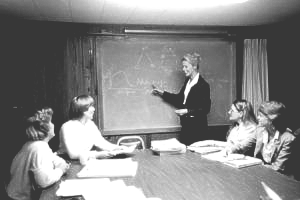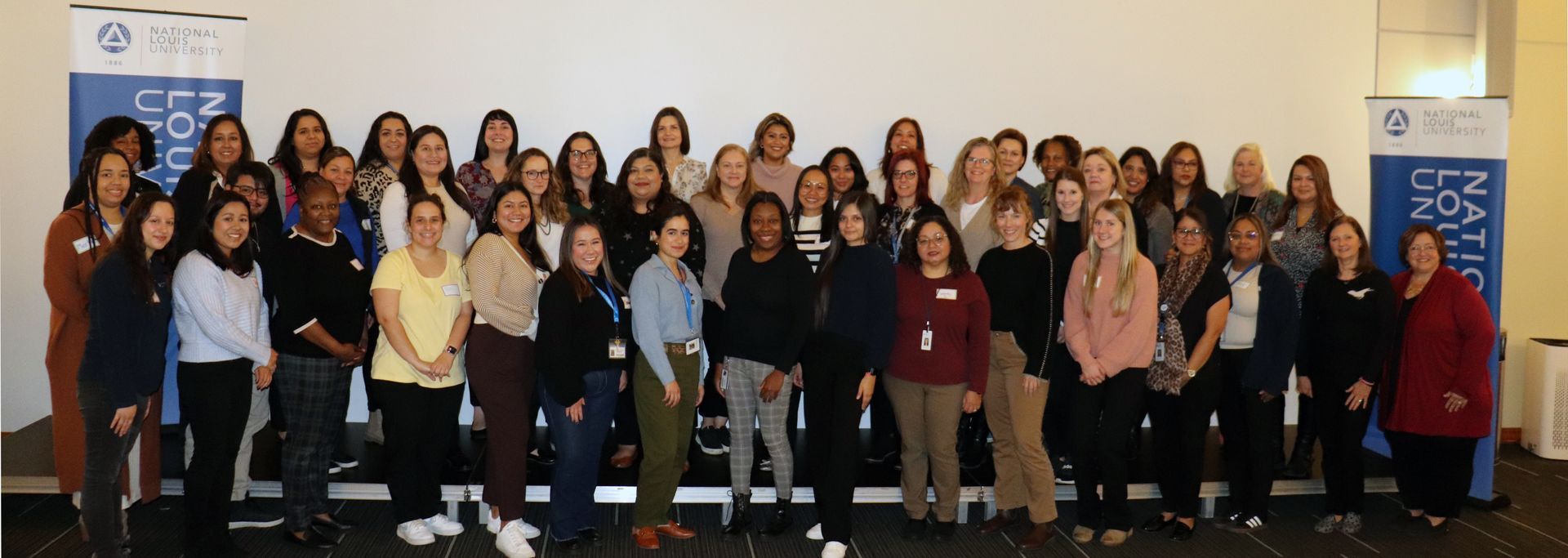BY Robyn Kelton, M.A. | November 20, 2023
Answering the Call for Data-Informed Decisions
by Robyn Kelton, M.A.
This document may be printed, photocopied, and disseminated freely with attribution. All content is the property of the McCormick Center for Early Childhood Leadership.
The call for center directors, family child care educators and entrepreneurs, teachers, and other early childhood professionals to use data to inform decisions is loud and clear. What may be less clear, however, is how to actually use data to answer that call.
Broadly, data equates to information. Information that can be used to help understand complex problems, make wiser decisions, and discern feelings from facts. To me, working with data is like being in on a really great secret—you get to pull back the curtain and see what is really going on behind the scenes. Sometimes we are able to easily use data to inform decisions, evaluate our practices, make improvements, and plan ahead. But we can also get bogged-down, confused, or overwhelmed with information leading data to become a source of frustration rather than enlightenment. This is especially true when we are expected to make data-informed decisions, but don’t have a clear sense of how.
I love data and quotes about data (as you’ll see). But if you are someone who feels your eyes glaze over, a ping of anxiety, or the desire to turn and run when you hear the word ‘data’, I implore you to give it one more try. Let’s start with examining the ways you are already using and benefiting from data.
THINK ABOUT THE PAST 24 HOURS
What are some of the ways you have engaged with data in your personal life in the past 24 hours? Did you use the weather forecast to inform your clothing choices? Did you use Google Maps drive times or traffic conditions to select what roads to take or determine when to begin your commute? Did you look to a smartwatch to monitor the number of steps you had taken? Did you look up online ratings to determine which restaurant to try for dinner? Chances are you’ve used data in countless ways during the past 24 hours. One of the most magical properties of data is that we are all, in a way, data scientists constantly calling upon data to help guide our decisions.
THE QUESTION ISN’T REALLY IF YOU ARE USING DATA, BUT HOW YOU ARE USING DATA
This is all the more important when we consider ways to use data to inform programmatic decisions. The overarching goal of working with data is to use the information available to make more effective and efficient choices. In the training Dancing with Data: Using Numbers to Inform Your Next Steps1, I discuss four helpful ways to use data in early care and education programs: 1) to describe what is happening, 2) to diagnose a problem, 3) to predict the future, and 4) to prescribe the best path forward. On their own and in combination, all these uses can lead us to better data-informed decisions.
Let me walk you through some examples. When faced with a question or challenge I often ask myself, what can the data do for me? I start with a hunch or opinion and then I focus my attention on the data by asking:
- What does the data tell me about the reality of what is actually happening (describe)? Oftentimes our gut instincts will tip us off to something, but descriptive data lets us peel back our own bias to get a clearer picture of reality. One example of this might be looking at the attendance records from family engagement events to count how many families attend, which events get the most attendance, and how frequently specific families attend. The data could reveal exactly what you were expecting or it might surprise you. Either way, you are better able to evaluate the effectiveness of current engagement strategies and explore possible ways to improve. This process always reminds me of one of my favorite quotes, “Without data, you’re just another person with an opinion.”
- Why is something happening (diagnose)? Knowing the what of something is helpful, but understanding the why is insightful. Let’s say cash flow is lower than expected for this month. Data from income and expenses can tell me if cash flow is low because there are families who are late making payments, the program has had increased or unexpected expenses, or a combination of both. When thinking about how data helps diagnose something, I think about Albert Einstein’s quote, “If you can’t explain it simply, you don’t understand it well enough.”
- What can data from the past tell me about the future (predict)? Here we get into making predictions—one of my favorite uses of data. Although we often have too little or too much data, as long as we have sufficient information about the past, we are better equipped to form theories and predict the future. A great example of this is using previous years’ birth records to predict the demand for early childhood services. If my area experienced a larger than typical cohort of babies born four years ago, I can reasonably predict that there will be an increased need for preschool services for four- and five-year-olds this year. The data we have and the predictions we can make will rarely be perfect, but they are almost always better than nothing at all. As Dean Abbott said, “No data is clean, but most is useful.”
- What does the data tell me to do (prescribe)? Now that we know what has happened, why, and how the future might unfold, we can decide what, if anything, we want to do about it. A common example of this is using aggregated data from developmental screening results to inform lesson planning. If a number of three-year-olds in the program are behind in fine motor development, teaching staff can use that data to intentionally incorporate more fine motor activities into the day. Another great example of using data to prescribe is using income and expense statements to project a budget. The data from past financial habits lets you determine how you want your future financial habits to look (you can read more about this process in the previous blog series Fiscal Check-Up for FCC).
Suhail Dosh said, “Most of the world will make decisions by either guessing or using their gut. They will be either lucky or wrong.” I vote we use data and I hope this information has encouraged you to think about data in different and exciting ways.
REFLECTIVE ACTIVITY
“The core advantage of data is that it tells you something about the world that you didn’t know before.” ~ Hilary Mason
Think of a challenge you are currently facing and respond to the questions below.
- What data do you have or could you easily get to help you better understand the situation?
- What does your intuition tell you is the likely cause(s) of the problem?
- What would the data look like to confirm your intuition?
- What would the data look like to prove your intuition wrong?
- How could you use the data to better predict what will happen next or decide what you should do next?
Click to more about Dancing with Data and other professional learning opportunities for center administrators, FCC educators and entrepreneurs, or coaches and TAs or contact PAS.BAS@nl.edu
1Dancing with Data: Helping Directors Use Numbers to Inform Change | PROGRAM ADMINISTRATION SCALE, 3rd Edition | Item 16. Evaluation and Continuous Improvement
We can’t improve what we don’t measure. Continuous quality improvement involves data collection, decision making, and reflective change. But making sense of data can sometimes be overwhelming. Participants in this session will explore formal and informal evaluation tools, learn a variety of ways to use data to inform decisions, and examine strategies incorporating data into continuous quality improvement efforts.
Robyn Kelton, M.A., is the Director of Research and Evaluation for the McCormick Center for Early Childhood Leadership at National Louis University (NLU). In this role, Robyn oversees work related to the McCormick Center’s research interests and evaluation and quality support tools, including Program Administration Scale (PAS) and Business Administration Scale for Family Child Care (BAS), the Early Childhood Work Environment Survey (ECWES), and the Administrator Role Perception Survey (ARPS). Robyn also oversees research related to the evaluation needs of the professional learning initiatives at the Center, as well as the relationship between evaluation tools and program quality, workforce retention, and leadership development. Robyn holds a Baccalaureate degree in psychology from the University of Kansas (KU) and a Master of Arts degree in psychology with an advanced certificate of study in organizational psychology from NLU. Robyn is currently a doctoral candidate in the brain, behavior, and quantitative science Ph.D. psychology program at KU. Prior to joining the McCormick Center in 2006, Robyn worked as lead teacher in a kindergarten classroom for an after-school program and as lead teacher of a 4–5-year-old classroom at a community-based child care center.





